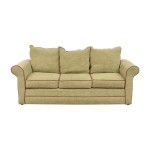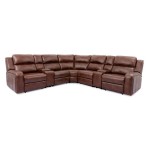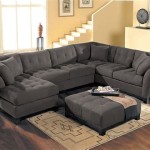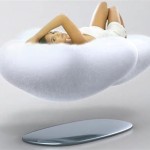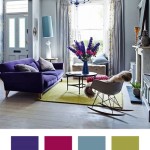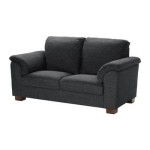Parts Of A Sofa: A Diagram to Label It
Understanding the anatomy of a sofa is beneficial for several reasons. It aids in proper maintenance and cleaning, assists in identifying potential problems requiring repair, and provides a greater appreciation for the craftsmanship and design involved. A labelled diagram serves as a valuable resource, enabling individuals to communicate effectively with upholstery professionals and make informed decisions regarding furniture purchases.
This article presents a comprehensive overview of the various components that constitute a typical sofa, accompanied by explanations of their functions and common variations. This information is presented in a clear and informative manner, utilizing terminology readily understood across different levels of expertise. The objective is to provide a practical guide for anyone seeking to enhance their understanding of sofa construction.
The external and internal elements of a sofa work in concert to provide support, comfort, and aesthetic appeal. Recognizing each component's role is crucial for optimal care and longevity of this essential piece of furniture.
The Frame: The Sofa's Foundation
The frame serves as the structural basis of the sofa, providing the necessary support and stability. It is typically constructed from hardwood such as oak, maple, or ash. Softwoods like pine may be used in less expensive sofas, but these are generally less durable and more prone to warping or damage. The quality of the frame directly influences the overall lifespan and resilience of the sofa.
The frame consists of several interconnected elements, including side rails, back rails, front rails, and corner blocks. These components are joined together using various methods, such as screws, dowels, glue, or a combination thereof. The joints are crucial points of stress, and their integrity is essential for maintaining the structural integrity of the sofa.
Corner blocks are strategically placed at the corners of the frame to reinforce the joints and prevent racking, which is a distortion of the frame that can lead to instability. These blocks are typically made of hardwood and are often glued and screwed into place. Their presence is a sign of quality construction and contributes significantly to the sofa's overall durability.
Examine the sofa's frame before purchase. Try lifting one corner; a well-built frame should remain rigid and not flex excessively. Listen for creaking or squeaking sounds, which may indicate loose joints or a poorly constructed frame. A sturdy frame is a worthwhile investment that will result in years of dependable use.
The Suspension System: Providing Support and Comfort
The suspension system works in conjunction with the frame to provide support and distribute weight evenly across the seating surface. This system determines the firmness and resilience of the cushions and contributes significantly to the overall comfort of the sofa. Several types of suspension systems are commonly used in sofa construction.
Springs: Springs are a traditional method of suspension, offering excellent support and durability. There are several types of springs used in sofas, including:
*Coil Springs: Individually wrapped coils that provide independent support, minimizing motion transfer.
*Sinuous Springs (also known as No-Sag Springs): S-shaped wires that run horizontally across the frame, providing a firm and uniform seating surface. These are a common and economical option.
*Eight-Way Hand-Tied Springs: A high-end system where each coil spring is individually tied to the frame and to adjacent springs in eight directions, creating a very stable and comfortable seating platform. This is a hallmark of quality craftsmanship.
Webbing: Webbing consists of interwoven strips of material, typically made of jute, nylon, or polypropylene, stretched across the frame. It provides a flexible and supportive base for the cushions. Webbing can be less durable than springs but offers a more affordable alternative.
Drop-in Coil Units: Pre-assembled units of coil springs encased in a frame. These units are easy to install and offer a consistent level of support.
The choice of suspension system impacts the price and the overall feel of the sofa. Sofas with spring suspension systems tend to be more expensive but offer superior support and longevity. Webbing is a more budget-friendly option but may require replacement sooner.
The Cushions: Defining Comfort and Aesthetics
The cushions are arguably the most important element in determining a sofa's comfort level. They consist of a filling material encased in a fabric cover. The type of filling and the quality of the fabric influence the cushion's feel, durability, and appearance.
Filling Materials: Common filling materials include:
*Foam: Polyurethane foam is a widely used filling material due to its affordability and versatility. Different densities of foam are available, with higher densities providing firmer support and greater durability.
*Polyester Fiberfill: A synthetic material that offers a soft and plush feel. It is less expensive than foam but tends to flatten out over time.
*Down and Feathers: Natural filling materials that provide exceptional comfort and a luxurious feel. However, they require regular fluffing and may not be suitable for individuals with allergies.
*Innerspring: Small, individually wrapped coils encased in foam or fabric, providing a supportive and resilient feel. This option combines the benefits of both springs and foam.
*Blended Fills: Combinations of different filling materials, such as foam and fiberfill or down and feathers, to achieve a desired balance of comfort, support, and durability.
Cushion Covers: Cushion covers are typically made from fabric, leather, or faux leather. The choice of material affects the sofa's aesthetic appeal, durability, and ease of cleaning. Common fabric choices include:
*Cotton: A natural fiber that is breathable and affordable. It is prone to staining and fading but can be treated with stain-resistant finishes.
*Linen: A strong and durable natural fiber that has a distinctive texture. It is susceptible to wrinkling but offers a sophisticated look.
*Polyester: A synthetic fiber that is resistant to stains, fading, and wrinkles. It is a practical choice for high-traffic areas.
*Microfiber: A synthetic fabric that is soft, durable, and easy to clean. It is a good option for households with children or pets.
*Leather: A natural material that offers a luxurious look and feel. It is durable and develops a patina over time. Leather requires special care to prevent cracking and drying.
Cushion Construction: The construction of the cushions also influences their comfort and durability. Common construction methods include:
*Box Cushions: Have a tailored appearance with straight edges and seams. They are typically firmer and more structured.
*Knife-Edge Cushions: Have softer, rounded edges and a more relaxed look. They are often more comfortable for lounging.
*T-Cushions: Have a T-shaped design that wraps around the arms of the sofa. They provide a more spacious seating area.
Consider the filling material, fabric, and construction of the cushions when choosing a sofa. The cushions should provide adequate support and comfort and be durable enough to withstand regular use. Factor in your lifestyle needs and aesthetic preferences to select cushions that will enhance your enjoyment of the sofa.
The Upholstery: The Sofa's Outer Layer
The upholstery is the outer covering of the sofa, encompassing all visible surfaces. It plays a critical role in defining the sofa's aesthetic appeal, providing protection to the internal components, and contributing to overall comfort. Upholstery materials vary widely in terms of texture, color, pattern, and durability.
Fabric Upholstery: As previously mentioned in the context of cushion covers, a wide range of fabrics are used for upholstery, each with unique characteristics. The selection process involves considering factors such as:
*Abrasion Resistance: The ability of the fabric to withstand wear and tear. Higher abrasion resistance is crucial for sofas in high-traffic areas.
*Stain Resistance: The fabric's ability to repel stains or be easily cleaned. This is particularly important for households with children or pets.
*Fade Resistance: The fabric's resistance to fading from sunlight exposure. This is a critical consideration for sofas placed near windows.
*Texture: The feel of the fabric against the skin. Some fabrics are soft and plush, while others are more textured or rough.
*Pattern: The design or motif on the fabric. Patterns can add visual interest to the sofa but may also be more difficult to clean or maintain.
Leather Upholstery: Leather offers a luxurious and durable upholstery option. Different types of leather are available, each with varying characteristics:
*Full-Grain Leather: The highest quality leather, retaining the natural grain and markings of the hide. It is durable and develops a patina over time.
*Top-Grain Leather: The top layer of the hide, sanded and finished to remove imperfections. It is more uniform in appearance than full-grain leather but still offers good durability.
*Split-Grain Leather: The lower layer of the hide, typically used for suede or corrected-grain leather. It is less expensive than full- or top-grain leather but also less durable.
*Bonded Leather: A composite material made from leather scraps and fibers. It is the least expensive type of leather upholstery but also the least durable.
Faux Leather Upholstery: Faux leather, also known as pleather or vinyl, is a synthetic material that mimics the look and feel of leather. It is a more affordable alternative to genuine leather and is often easier to clean and maintain. However, it is typically less durable and breathable than leather.
The choice of upholstery material significantly impacts the sofa's appearance, comfort, and longevity. Carefully consider your lifestyle needs and aesthetic preferences when selecting upholstery to ensure that it meets your requirements.
The Arms: Providing Support and Comfort
The arms of a sofa, extending from the sides, serve a dual purpose: providing structural support and adding to the overall comfort. They offer a place to rest arms and hands, enhancing the lounging experience. Sofa arms are diverse in design, influencing both aesthetics and functionality.
Types of Sofa Arms:
*Rolled Arms: Feature a curved, rounded shape, adding a traditional and elegant touch. Often padded for additional comfort. These are sometimes referred to as scroll arms.
*Track Arms: Characterized by clean, straight lines and a modern, minimalist aesthetic. Usually have a square or rectangular profile and provide a sleek appearance.
*Pillow Top Arms: Offer exceptional comfort with a plush, pillowed surface. These arms are generously padded and provide a soft resting place.
*Panel Arms: Straight, flat arms constructed with panels of wood or fabric. Offer a simple and understated design, often found in mid-century modern or contemporary styles.
*Slope Arms: Angled arms that slope gently downwards from the back of the sofa to the front. Provide a comfortable and stylish option, blending classic and contemporary elements.
*English Roll Arms: Similar to rolled arms, but with a lower profile and a more relaxed, casual appearance. Often feature loose cushions and a slightly rounded shape.
Arm Construction: The construction of sofa arms involves a frame typically made of wood, covered with padding and upholstery. The quality of the frame and padding affects the durability and comfort of the arms. Well-constructed arms provide firm support and maintain their shape over time.
Arm Height: The height of the arms is a crucial factor in comfort. Arms that are too high can strain the shoulders, while arms that are too low may not provide adequate support. The ideal arm height allows the user to rest their arms comfortably without hunching or straining.
Arm Width: The width of the arms influences both aesthetics and functionality. Wider arms provide a larger surface area for placing drinks or other items, while narrower arms create a sleeker, more streamlined look. Consider the intended use of the sofa when choosing the arm width.
Selection of the appropriate arm style for a sofa depends heavily on the aesthetic preferences and comfort priorities of the buyer. The arm is not merely a structural element but an area that contributes greatly to the user's experience of the sofa.
The Legs: Supporting the Sofa and Defining Style
Sofa legs are the foundational supports that elevate the sofa off the ground. While seemingly simple, they contribute significantly to the overall style and stability of the furniture. They distribute the weight of the sofa and its occupants, protecting the frame from direct contact with the floor. Materials, shapes, and finishes of legs vary widely, contributing to the sofa's aesthetic personality.
Materials Used for Sofa Legs:
*Wood: A common and versatile material, offering a warm and natural look. Wood legs can be crafted into various shapes and finishes, from simple tapered legs to ornate carved designs. Hardwoods such as oak, maple, and birch are commonly used due to their strength and durability.
*Metal: Provides a sleek and modern aesthetic. Metal legs are often made of steel, chrome, or brushed nickel, offering a durable and stylish option. They can be shaped into clean lines or more intricate geometric designs.
*Plastic: A more economical option, often used in budget-friendly sofas. Plastic legs are lightweight and resistant to moisture, but may not be as durable or aesthetically pleasing as wood or metal.
Types of Sofa Legs:
*Tapered Legs: Slender legs that gradually narrow towards the bottom, lending a classic and elegant touch. Often found in mid-century modern or traditional sofa styles.
*Square Legs: Straight, rectangular legs with clean lines, offering a modern and minimalist look. Commonly used in contemporary and transitional sofa designs.
*Round Legs: Cylindrical legs with a simple and understated appearance. Can be made of wood or metal and are suitable for various sofa styles.
*Cabriole Legs: Curved legs with a distinctive S-shape, adding a touch of sophistication and elegance. Often found in traditional or antique-inspired sofas.
*Bun Feet: Short, rounded legs that resemble buns, lending a charming and whimsical touch. Commonly used in cottage or farmhouse-style sofas.
*Block Legs: Sturdy, rectangular legs that provide a solid and stable base for the sofa. Often used in contemporary or industrial-style sofas.
Leg Height and Stability: The height of the sofa legs affects the overall comfort and accessibility of the sofa. Higher legs make it easier to clean underneath the sofa, while lower legs create a more grounded and intimate feel. Properly installed and sturdy legs are essential for ensuring the sofa's stability and preventing wobbling or tipping.
Aesthetic Considerations: The style and finish of the sofa legs should complement the overall design of the sofa and the surrounding decor. Consider the material, shape, and color of the legs to create a cohesive and visually appealing look. The legs can serve as a subtle detail that enhances the sofa's aesthetic appeal.
The legs of a sofa are a foundational element that should not be overlooked. They contribute to the structural integrity of the sofa, while also setting the aesthetic tone. Understanding the different materials, styles, and considerations when choosing sofa legs enables better purchasing decisions when selecting a new sofa.

These Are The Parts Of A Sofa Ilrated Diagram Home Stratosphere

Schematic Of A Three Seat Sofa Frame Side Rail To Back Post Scientific Diagram

Parts And Things In The House

Voary Worksheets Elt Toolbox

Furniture And Parts Of The House Worksheet

Around The House Cut And Paste Lesson Plan For Kindergarten 1st Grade

House And Furniture Worksheet

Free House Worksheets Teacher S Zone

House Parts 2 B W Worksheet

ใบงานเร อง Room In My House ค นหาด วย Google

